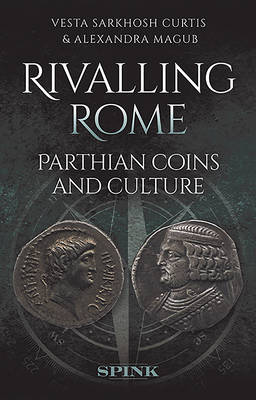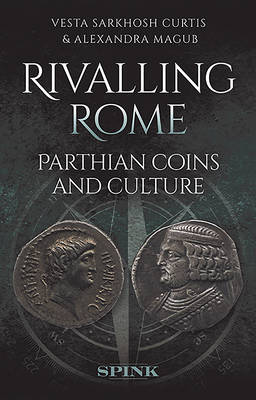
- Afhalen na 1 uur in een winkel met voorraad
- Gratis thuislevering in België vanaf € 30
- Ruim aanbod met 7 miljoen producten
- Afhalen na 1 uur in een winkel met voorraad
- Gratis thuislevering in België vanaf € 30
- Ruim aanbod met 7 miljoen producten
Zoeken
€ 33,45
+ 66 punten
Omschrijving
One hundred years after the conquest of the Persian Empire by Alexander of Macedon, we see the emergence of a new Iranian dynasty that, by 140 BC, has extended its rule to Western Iran and Mesopotamia. The Arsacid Parthians, famous for their riding and archery skills, became Rome's most dangerous enemy east of the River Euphrates. Encounters between Roman generals and Parthian envoys are vividly described in Classical accounts of a biased nature, and unfortunately no such sources are available from the Parthian side. Here, the most important primary source is the coinage of the period c. 248 BC - AD 224. These coins reveal important information about the development of the Parthian state, its expansion and the role of the king, who, by 111 BC, had adopted the ancient Persian title of King of Kings. Rome's interference in the region begins during the reign of Mithradates II's and culminates in the devastating defeat of the Roman army under the General Crassus at the Battle of Carrhae in 53 BC. Over the next 300 years these two superpowers fight for territorial control in the region, particularly over Mesopotamia and Armenia. This book will highlight the rise to power of the Parthians, the long conflict with Rome, as well as the culture and religion of the Parthian Empire as seen through the coinage of this period. It is co-published with the British Museum to accompany an exhibition of the same name which opens there in April 2020.
Specificaties
Betrokkenen
- Auteur(s):
- Uitgeverij:
Inhoud
- Aantal bladzijden:
- 128
- Taal:
- Engels
Eigenschappen
- Productcode (EAN):
- 9781912667444
- Verschijningsdatum:
- 13/05/2020
- Uitvoering:
- Paperback
- Formaat:
- Trade paperback (VS)
- Afmetingen:
- 170 mm x 239 mm
- Gewicht:
- 362 g

Alleen bij Standaard Boekhandel
+ 66 punten op je klantenkaart van Standaard Boekhandel
Beoordelingen
We publiceren alleen reviews die voldoen aan de voorwaarden voor reviews. Bekijk onze voorwaarden voor reviews.








